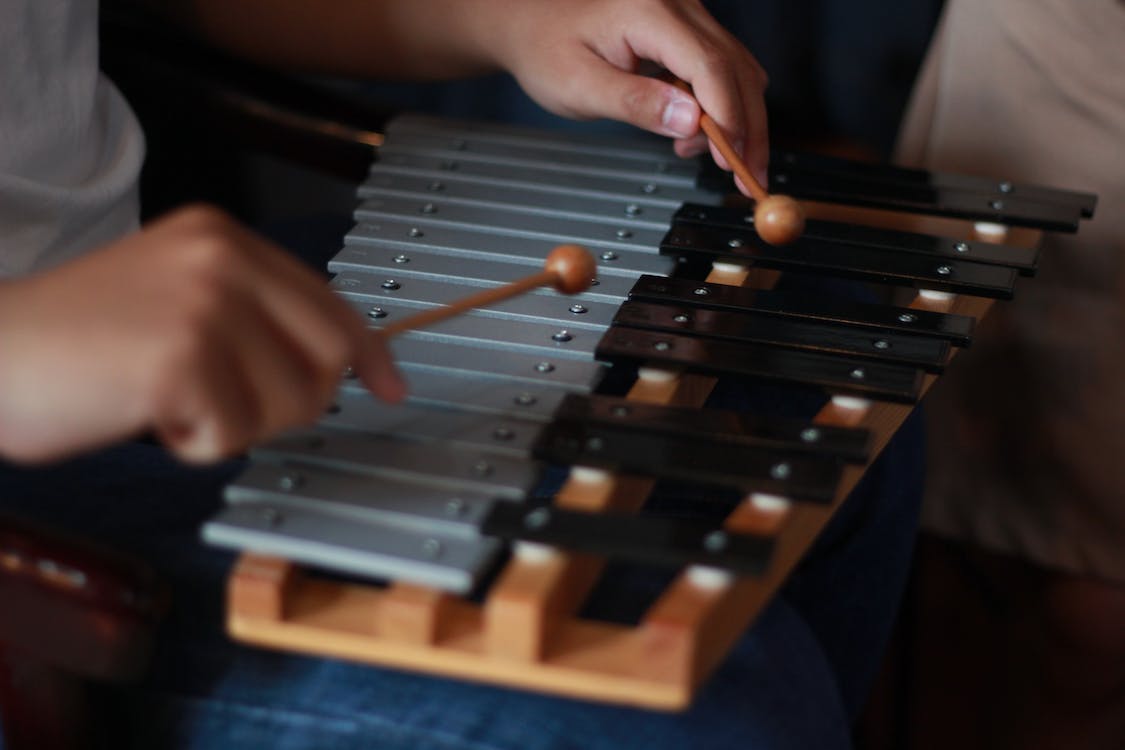The glockenspiel is a percussion instrument that is played through hitting or scrapping. It may look like a xylophone, but it is definitely called the glockenspiel. The name glockenspiel is a German word that means bell play, for it refers to the sound of a small bell. Initially, the early glockenspiel has a set of small bells of different sizes. With that, it is called the hybrid of two different types of instruments: The glockenspiel with real bells and the metallophone.
Originally, the glockenspiel was not used in an orchestra. But with the help of George Friedrich Handel, the instrument started to be associated with several other orchestral compositions. The first involvement of the glockenspiel in the orchestra was with Handel’s oratorio called Saul in 1739. Following that, in 1791, Wolfgang Amadeus Mozart also had the glockenspiel for his two-act opera called The Magic Flute. Subsequently, several orchestral compositions also used the glockenspiel in their piece. Some of these were the Symphony No. 4 by Gustav Mahler, Piano Concerto No. 1 in D-flat Major, Scythian Suite, and Romeo and Juliet by Sergei Prokofiev, and Waltz No. 6 from The Sleeping Beauty composed by Pyotr Ilyich Tchaikovsky.
This percussion instrument was struck when played by the musicians. However, by the 17th century, the bells were then replaced by steel bars. It was supposedly a temporarysubstitution for bells, but the arrangement soon began to develop into a musical instrument. Subsequently, it gained its right while its name, glockenspiel, was retained. Back then, much like the xylophone, the glockenspiel was popular with children. Also, the keys of the glockenspiel were arranged in the fashion of the keyboard of a piano. This instrument is limited to the upper register and usually has about two and a half or three octaves. Some glockenspiels may have three and a half octaves.
The timber of this instrument is homogenous over its entire range. The most pleasing tone is achieved three or four octaves above the middle C key. If played together with the xylophone, one might notice that the glockenspiel has the highest pitch. With that, it can be concluded that the characteristics of sound between the two are enormously different.Moreover, because its keys are made out of steel, the sound of this instrument contains a large number of bright timbers. In addition, it cannot reach a high-volume level but can merge sounds with other brass instruments. In the orchestra, the significant role of the glockenspiel is to add brightness to the melody lines that are played by other instruments. Its task is usually most frequently combined with harp, piccolo, flute, and celesta. Meanwhile, it is less often played with the oboe, clarinet, and violin.
In playing the glockenspiel, the instrument is struck using a pair of hard mallets whose head is made out of metal or plastic. Sometimes, mallets could also be made of rubber, but using too soft rubber can result in a dull sound. Interestingly, the glockenspiel could be played using four mallets. Usually, the glockenspiel mallet has a diameter of 1.4 to 2.8 centimeters and a length of 24 to 37 centimeters.
In a marching band, the glockenspiel bars were mounted in a portable case, which is held vertically. Nevertheless, sometimes, the bars were held horizontally through a harness that is similar to that found on a snare drum. Meanwhile, in orchestral use, the glockenspiel is held horizontally.
In popular music, Glockenspiels were popular in almost all genres of music. In fact, it was featured in several different band’s arrangements including in the songs, ‘Closer to the Heart,’ ‘The Spirit of Radio,’ Xanadu,’ and Circumstances,’ all by the band Rush. Furthermore, The Beach Boys had also associated the glockenspiel in some of their songs like the ‘Sloop John B.’ E Street Band had also featured the glockenspiel in their ‘Hungry Heart,’ and Born to Run’ songs. Most notably, the English rock band, The Beatles, had also used the glockenspiel in their ‘Being for the Benefit of Mr. Kite.’
Aside from that, the American pop band formed in 2004, known as Panic! at the Disco, also used the glockenspiel in their music. Some of these were in the songs ‘I Write Sins Not Tragedies,’ ‘Build God, and ‘Then We’ll Talk.’ Other popular bands like Radiohead used the glockenspiel in their song ‘No Surprises,’ ‘Lull,’ and ‘The Tourist.’

